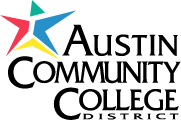Since 2010, the Latino student population at Austin Community College (ACC) has increased by 13 percentage points, from 25 percent to 38 percent. Among two-year institutions in the United States, AAC now has the ninth-largest population of Latino students.
“Because of that change in demographics in the community and at ACC, it has made us look at how we operate, really, for everyone,” said Guillermo “Willie” Martinez, interim vice president of student affairs.
“What stood out to me was their strategic plan, their campus climate and culture,” Santiago said. ACC’s “programs on counseling, advising students really made a big difference and changed their perspective of what it takes to serve their students.”
In 2009, as part of the Achieving the Dream project, ACC began disaggregating data by race and ethnicity to identify equity gaps. This work accelerated in 2012, when ACC was selected to participate in the Integrated Planning and Advising for Student Success (IPASS) initiative.
Since 2015, ACC has reallocated money, staff time, and other resources to focus on guided pathways. The college consolidated all degree programs into ten areas of study that provide clear program maps explaining what courses students need to graduate and which credits can transfer to other institutions.
ACC also disaggregated data to identify different student “personas,” or subgroups needing certain resources.
“Not every student needs every single service, but there are a lot of students that need certain services,” Martinez said. With forty thousand students in a given term, “how do you be more proactive in finding those students that need tutoring? That need support with housing, food, or other social supports?”
ACC accomplished its most comprehensive reform—reimagining the entire advising infrastructure—by breaking down silos and updating a paper-based system to state-of-the-art case management software.
The reforms “moved us from very transactional interactions with our students to interactions that became much more relational and transformative,” Martinez said.
Through a three-year program with InsideTrack, advisors, faculty, and other staff received intensive training on “advising through coaching.” To continue professional development opportunities around advising, the student affairs office closes at noon on Friday.
Before speaking with students, AAC’s faculty, advisors, and success coaches use the online advising platform to identify barriers, track services students need or have received, and identify the courses they need to take to graduate or transfer. Knowing this before students walk in allows advisors to prioritize conversations about students’ goals and aspirations, and how ACC can help students achieve them.
“We have really tried to identify within ourselves what changes we needed to make when we spoke with these students, identifying and understanding where they were coming from,” Martinez said. “It has definitely been transformational for the students and the staff because we have managed to do so much more. And I think the students appreciate that they feel their time is well spent.”
Student affairs now manages ten thousand student cases through collaborative teams of faculty, advisors, and tutors.
But ACC’s work is still ongoing. In the near term, the college is expanding its early-alert system to make both students and, perhaps more importantly, faculty members aware of available resources and interventions.
“When things get in the way, instead of just letting go of the academic dreams, how can we help?” Martinez said. For those times when ACC can’t provide the services students need, the college has developed partnerships with more than a hundred community organizations. “If we don’t have those services here, we know where to recommend they go,” Martinez added.
In addition to advising, ACC has worked to improve equity and inclusion across campus. The college is one of only ten institutions nationwide selected to establish a Truth, Racial Healing & Transformation (TRHT) Campus Center by AAC&U. ACC is hiring hiring an inaugural TRHT director and a chief equity, diversity, and inclusion officer; it has a Mexican American Center and African American Center; and it is building an Asian American Center.
To diversify the college’s faculty, staff, and administrators, ACC revised policies for job postings and applications to ensure they describe the students AAC serves, explain AAC’s mission, and ask applicants to share their own equity-based philosophy or practices. ACC increased training for new full-time and adjunct faculty from one to three days, adding topics such as culturally responsive teaching. ACC also hired new faculty mentors and made training on equity and inclusion mandatory every two years.
ACC’s data show that many of the reforms—especially to advising—are working. For example, 85 percent of first-year, first-time-in-college students who are case-managed in the coaching-based advising system persist from term to term, compared with 70 percent of other students. For male Latino students who participate in coaching, persistence rates are 22 percentage points higher.
Tags: Achieving the Dream, Association of American Colleges & Universities, Hispanic, Integrated Planning and Advising for Student Success, Latino, Latino students, student success, Truth Racial Healing & Transformation Center
Back to Top
